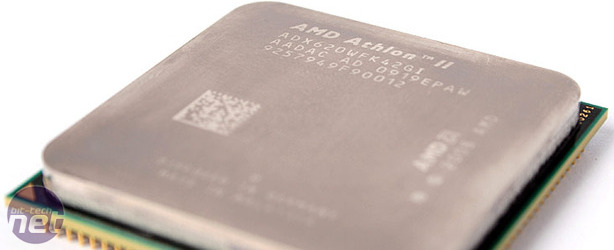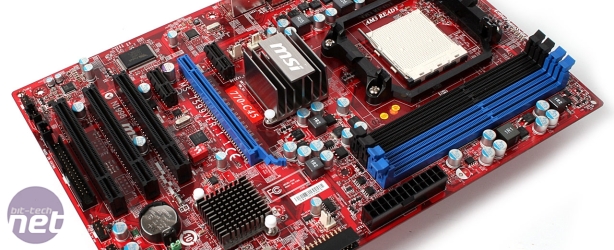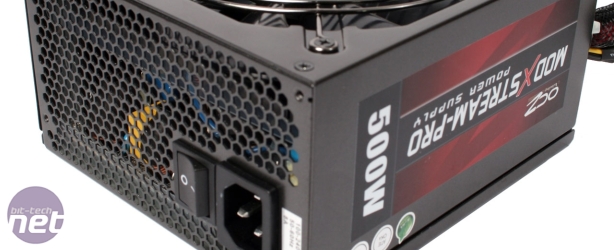PC Hardware Buyer's Guide November 2010
November 3, 2010 | 12:13

Affordable All-Rounder September 2010
This system is designed to be our recommendation for those looking for maximum performance per pound (we’re British, y’know). The power of a fast dual-core processor is still perfectly adequate for everyday use and gaming – add a decent amount of memory and as potent a graphics card as you can afford, and you’ll be fine for the foreseeable future on a 1,680 x 1,050 screen.| Affordable All-Rounder | |||
| Product | UK Price (inc VAT) | US Price (ex tax) | |
| CPU | 3.0GHz AMD Athlon II X2 250 | £45 | $60 |
| Motherboard | MSI 770-C45 | £50 | $80 |
| Memory | 4GB 1,333MHz DDR3 | £60 | $70 |
| Graphics Card | Sapphire ATI Radeon HD 6850 | £155 | $180 |
| PSU | Corsair 400CX 400W | £35 | $55 |
| CPU Cooler (UK) | Akasa AK-876 | £15 | NA |
| CPU Cooler (US) | Arctic Cooling Freezer 64 Pro | (£15) | $30 |
| Case | Antec Three Hundred | £45 | $60 |
| Optical drive | SATA DVD-RW | £15 | $20 |
| Storage | 500GB SATA 3Gbps | £30 | $50 |
| Overall Price: | £450 | $605 | |
New This Month
New this month is the introduction of the ATI Radeon HD 6850 1GB into the build. This may be a little controversial, though, as its barely any faster than the Nvdia GTX 460 1GB that it replaces. In fact there is very little to choose between the two cards as they both perform very similarly, cost the same and are very quiet.As a result, it comes down to which of the extra features that each card offers is of more value to you personally. Here, in the bit-tech offices, we value Eyefinity support over PhysX or 3D Vision, so we’ve plumped for the HD 6850 1GB. If you’d prefer PhysX support and can’t see yourself using Eyefinity anytime soon then just sub out the HD 6850 for a GTX 460 1GB. Simples.
If you need to cut any cost out of the build then we’d suggest dropping down to a GTX 460 768MB. These can be had for around £120 at the moment so you’d drop the overall cost of the build down to about £415 and still have a system capable of playing most modern games at top settings on a 20in monitor.
Dropping all the way down to a GTS 450 1GB or HD 5770 1GB is an option too, but you’d be taking a much larger performance hit if you did. Overall, the HD 5770 is slightly faster, though it's also roughly £20 more - you'll need to read over our GeForce GTS 450 1GB review with the new pricing in mind and make your decision based on your budget.
And The Rest
We’ve stuck with the cheap and cheerful AMD Athlon II X2 250 this month as it’s a solid performer for the price. It’s no slouch in games or single threaded tasks as it skips along at a not inconsiderable 3GHz. Okay it’ll suffer slightly if you do a lot of video encoding but realistically if that’s your thing then you’re probably looking to spend a little more on a PC anyway. As usual we’ll mention that you could opt for a cheap Intel system built around a Pentium G6950 but as it retails for £30 more than the Athlon II and you’ll have to fork out for a £80 Gigabyte GA-H55M-UD2H to sit it in, we’ll stick with out AMD recommendation for now.The classic MSI 770-C45 is still our cheap AMD motherboard of choice. It’s not going to be schooling and X58 boards any time soon but it’s a decent board with a solid BIOS, so it’s a great buy at this price. We pair the CPU and motherboard with 4GB of 1,333MHz DDR3 memory – this is arguably an extravagance as using 2GB is okay, but we like the extra snappiness of having 4GB of RAM.

We’ve chosen 1,333MHz memory as it’s £20 cheaper than 1,600MHz and won’t limit our overclocking too much. For example, if we were to aim for an overclock of 3.6GHz, we’d have to use a HTT of 257MHz (as 257 x 14 = 3,598) – the 770-C45 has a 4x memory strap, so we can use that to keep the memory within its limits (1,028MHz). Memory rated at 1,066MHz is roughly the same price as 1,333MHz RAM so we may as well get the faster DIMMs to try to future-proof the system a little.
We played with the idea of using the reference CPU cooler for this system to keep the price down, but given that we wanted to overclock the CPU we decided to buy a better performing third-party cooler after all. The Akasa AK-876 is cheap and quiet and has three heatpipes to cope with a spot of overvolting and overclocking. Unfortunately, the Akasa isn’t available everywhere, so we recommend that our US friends go for the slightly more capable and expensive Arctic Cooling Freezer 64 Pro.

Corsair’s CX400 is a solid 400W PSU that’s easily able to power all out kit, even with a decent CPU overclock. The Antec Three Hundred is a low-cost case, but it’s solidly made and includes a rear exhaust fan and a large roof exhaust fan, so it’ll keep all your hardware cool and survive a good few knocks. Finally, we’ve added the cheapest DVD-RW drive we could find and a 500GB hard disk.
If you haven't got a copy already, you might want to factor in a copy of Windows 7 - if you're confident that you won't be upgrading much, then an OEM copy should be fine, but serial upgraders need the pricier retail version.

MSI MPG Velox 100R Chassis Review
October 14 2021 | 15:04









Want to comment? Please log in.